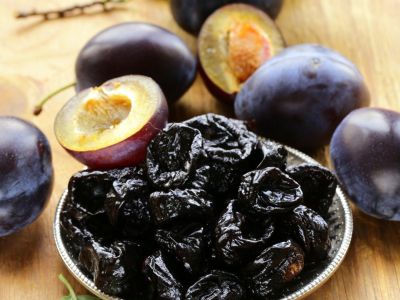Growing Prunes in the Home Garden
Before jumping in and learning how to make prunes, first consider whether or not you have a suitable type of plum for drying. Not all plums make good prunes. Commercial prune growers generally opt for European plum varieties over Japanese or indigenous American species of plums. For the home gardener, European plums offer an additional advantage. Many European plum varieties and cultivars are self-fertile or are grafted with two compatible varieties on the same root stock. For gardeners with limited space, this means growing plums for prunes can be accomplished with a single tree. European plum varieties tend to bloom later in the season, which means they are much hardier and more reliable fruit producers than Japanese types. European plums also contain more natural sugars, which makes for sweeter-tasting prunes.
How to Make Prunes
Learning how to dry prunes safely is not difficult. For the best results, start with freshly-harvested, mature plums in good condition (no mold, bruising or decay). Wash and dry the plums gently. Small plums can be dried whole, but the resulting prunes will contain pits. In order for whole plums to dehydrate properly, the skins must be cracked by dipping the plums in boiling water for 1-2 minutes. Cool the fruit quickly by submerging in ice water, then continue with the following instructions for how to dry prunes:
Pre-treat plums to retain color – Soak whole or pitted, halved plums in a pretreatment solution for 3-5 minutes. This solution can be made by mixing equal parts of lemon juice and water. Arrange the plums on drying trays – Remove the plums from the pre-treatment solution and drain thoroughly. Then place the plums (skin side down to prevent sticking) in a single layer on the drying racks. Leave space around each plum for air to circulate.Select the drying temperature and time – Place the drying racks in the oven or dehydrator and set the thermostat to 140 degrees F. (60 C.) Pitted, halved plums will take 24 to 36 hours to dry in a dehydrator. Expect longer times for whole plums or when drying plums in the oven.Test for doneness – To promote even drying, turn or rotate the fruit every 3 to 4 hours. Properly dried fruit will feel leathery and be pliable. Check for doneness by squeezing a few pieces of cooled fruit in your hand. If they stick together or ooze moisture, continue drying. Condition – This conditioning process evenly distributes the residual moisture throughout the prunes and prevents spoilage when stored. To condition prunes, place them in a lightly-covered glass or plastic bowl for 4 to 10 days. Stir or shake daily. If droplets of moisture appear inside the container, repeat the drying and conditioning process.
To store prunes, place small portions of dried and conditioned plums into vapor-tight jars, containers or plastic bags. Store them in a cool, dry, dark place and use within 6 to 12 months.
